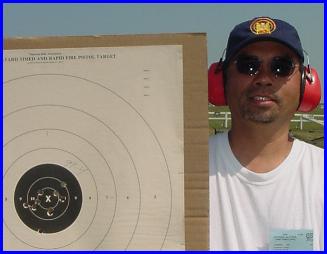
Greetings Shooters,
Have you ever experienced the following? You had a thorough eye examination by your Optometrist or Ophthalmologist and purchased a new pair of eyeglasses with all the bells and whistles. Of course, you had expectations of seeing like an eagle. You put on the new eyeglasses and did not focus very well and worse yet, you felt a little dizzy. Your immediate thoughts were, "The lab made my eyeglasses wrong!," " I messed up during the eye exam!," or "The doctor is a quack!" A fourth possibility may be the ABBE Value of your eyeglass lenses.
Different lenses have different properties. The density, known as the index of refraction, will vary from one material to another. The ABBE Value will also be different for the various materials. ABBE Value is a number given to quantify the amount of chromatic aberration of a specific ophthalmic lens material. Chromatic aberration occurs when white light is broken up into component colors. A color fringe may be noted around a light source or around an object. In reality, my patients never complain of color fringes, but rather, complain of blurriness and peripheral distortion.
Here is a list of ABBE Values. With a higher number, there is less aberration. With a lower number, there is more aberration.
| MATERIAL | INDEX | ABBE VALUE | Crown Glass | 1.523 | 59 | High Index Glass | 1.60 | 42 | High Index Glass | 1.70 | 39 | Plastic CR-39 | 1.49 | 58 | Mid Index Plastic | 1.54 | 47 | Mid Index Plastic | 1.56 | 36 | High Index Plastic | 1.60 | 36 | High Index Plastic | 1.66 | 32 | Trivex | 1.53 | 43 | Polycarbonate | 1.58 | 30 |
Ernst Abbe was a brilliant German mathematician and physicist who developed this rating system. Carl Zeiss was so impressed with Ernst Abbe that he was hired by Zeiss in 1866 and eventually became the owner of the company. Different manufacturers may have a different ABBE Value for the same exact lens material. Crown glass is most commonly used for eyeglass lenses with an index of refraction of 1.523. There are, however, 50 glass formulations used today for various optical applications, all with their unique properties. Perhaps this may be one of the explanations as to why there are different qualities to our scopes.
Polycarbonate lenses are used extensively for safety eyewear such as in our shooting glasses and have the lowest ABBE Value (most aberration). Note that crown glass has the highest ABBE number (least aberration). I've communicated with shooters who thought that their lenses made out of glass seemed to provide the best focus. High index glass has more aberration than standard crown glass. The higher the index of refraction, the denser the material and therefore a thinner lens. Cosmetically, thin lenses appear more attractive but have more aberration.
You might want to print out this list and refer to it when you purchase your next pair of eyeglasses. Despite the ratings, I must emphasize that most of us may see just as well with low ABBE Value lenses as compared to high ABBE Value lenses. I would always recommend polycarbonate as the first choice of materials for our shooting glasses because of its safety characteristics. For your everyday lenses used under non-hazardous conditions, the chart may prove to be very useful. An informed shooter is a better shooter.
Good Vision and Good Shooting To All,
Norman H. Wong, O.D.
